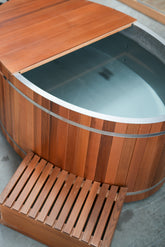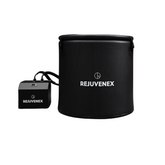The Ultimate Guide to Home Saunas in Australia: Are They Worth It?
Home saunas have grown in popularity, offering a private retreat for relaxation, detoxification, and wellness. With numerous options available, many homeowners are asking: Are home saunas worth it? This blog explores the benefits, costs, safety concerns, and how to set up your own sauna at home. Whether you're considering an infrared or steam sauna, this guide will help you make an informed decision.
What Are the Benefits of a Home Sauna?
Installing a sauna at home provides several advantages:
-
Convenience: Enjoy the benefits of a sauna without leaving your house.
-
Health Benefits: Saunas promote relaxation, improve circulation, and support detoxification.
-
Privacy: No need to share space with strangers in public facilities.
-
Adds Value to Your Home: A well-designed sauna can increase property appeal.
Are Home Saunas Worth It?
The answer depends on your needs and lifestyle. Home saunas are worth it if you value convenience, regular use, and long-term health benefits. However, they may not be ideal for occasional users due to the upfront cost.
Types of Home Saunas
1. Infrared Saunas
-
Use infrared light to heat your body directly.
-
Operate at lower temperatures (50–60°C).
-
Energy-efficient and easy to install.
-
Ideal for relaxation and muscle recovery.
2. Steam Saunas
-
Use heated water to create steam.
-
Operate at higher temperatures (70–90°C).
-
Offer traditional sauna experiences.
-
Require plumbing and ventilation for installation.
3. Portable Saunas
-
Affordable and easy to set up.
-
Compact design suitable for small spaces.
-
Less durable than permanent installations.
Rejuvenex: Your Trusted Sauna Provider in Australia
If you’re considering investing in a home sauna, look no further than Rejuvenex. Rejuvenex offers a wide range of premium traditional and infrared saunas designed for both indoor and outdoor use. Here’s why they’re a top choice:
Why Choose Rejuvenex?
-
High-Quality Materials: Crafted with hypoallergenic Canadian Hemlock wood for durability and safety.
-
Advanced Features: Includes Finnish-made Harvia heaters, LED lighting for ambiance, chromotherapy options, and sound systems.
-
Customizable Options: Choose from 2-person indoor saunas to larger outdoor barrel models for up to 4 people.
-
Energy Efficiency: Designed with eco-friendly technology to minimize running costs.
How Much Does a Home Sauna Cost?
|
Type of Sauna |
Average Cost (AUD) |
Installation Requirements |
|
Infrared Sauna |
$1,500–$5,000 |
Minimal; plug-and-play models available |
|
Steam Sauna |
$3,000–$10,000 |
Plumbing and ventilation needed |
|
Portable Sauna |
$200–$1,000 |
None; easy setup |
The cost varies based on size, materials, and additional features like Bluetooth speakers or chromotherapy lighting.
Are Home Saunas Expensive to Run?
Home saunas are surprisingly energy-efficient:
-
Infrared saunas consume around 1.6 kWh per session.
-
Steam saunas use slightly more electricity due to heating water.
On average, running a sauna costs between $0.50–$1 per session in Australia.
How to Build a Sauna at Home
Building a sauna at home can be a rewarding DIY project or handled by professionals. Here’s how:
Step 1: Choose the Location
-
Ideal spots include basements, bathrooms, or outdoor areas.
-
Ensure proper ventilation for steam saunas.
Step 2: Select the Type
Decide between infrared or steam based on your preferences and budget.
Step 3: Gather Materials
For DIY projects:
-
Wood (e.g., cedar or hemlock)
-
Insulation
-
Heating elements (infrared panels or steam generators)
Step 4: Installation
Follow manufacturer instructions for prefabricated kits or hire professionals for custom builds.
FAQs
1. Are home saunas safe?
Yes, when used correctly. Follow manufacturer guidelines and stay hydrated during sessions.
2. How much electricity does a home sauna use?
Infrared saunas use approximately 1.6 kWh per session, while steam saunas consume slightly more due to water heating.
3. Does a sauna add value to your home?
Yes! A well-installed sauna can increase property value and appeal to potential buyers.
4. How long does it take for a home sauna to heat up?
Infrared saunas heat up in 10–15 minutes; steam saunas may take 30–40 minutes.
5. Can I build my own sauna at home?
Absolutely! DIY kits are available for infrared and traditional saunas. However, professional installation is recommended for steam saunas due to plumbing requirements.
Conclusion
Home saunas are an excellent investment for wellness enthusiasts who value convenience and privacy. Whether you choose an infrared model for its energy efficiency or a steam sauna for its traditional experience, there’s an option to suit every need and budget. With proper planning and installation, you can enjoy the luxury of a spa-like retreat right in your own home!
If you're ready to embrace the benefits of a home sauna, start exploring your options today!




